Novel Multilayer SAW Temperature Sensor for Ultra-High Temperature Environments
Abstract
:1. Introduction
2. Materials and Methods
2.1. Sensor Fabrication
2.2. High-Temperature Measurements
3. Results and Discussion
- The temperature range is large enough to monitor a relatively large temperature range.
- The sensor has a long working time at high temperature.
- Fitting is performed in three temperature stages, which improves the result of sensor estimation.
4. Conclusions
Author Contributions
Funding
Conflicts of Interest
References
- Jurgens, R.F. High-temperature electronics applications in space exploration. IEEE Trans. Ind. Electron. 1982, IE-29, 107–111. [Google Scholar] [CrossRef] [Green Version]
- Fonseca, M.A.; English, J.M.; von Arx, M.; Allen, M.G. Wireless micromachined ceramic pressure sensor for high-temperatureapplications. J. Microelectromech. Syst. 2002, 11, 337–343. [Google Scholar] [CrossRef] [Green Version]
- Korashy, A.; Attia, H.; Thomson, V.; Oskooei, S. Characterization of fretting wear of cobalt-based superalloys at high temperature for aero-engine combustor components. Wear 2015, 330–331, 327–337. [Google Scholar] [CrossRef]
- Li, Y.; Yu, Y.; San, H.; Wang, Y.; An, L. Wireless passive polymerderived SiCN ceramic sensor with integrated resonator/antenna. Appl. Phys. Lett. 2013, 103, 163505. [Google Scholar] [CrossRef] [Green Version]
- Gregory, O.J.; Conkle, J.R.; Birnbaum, T.J. Wireless Temperature Measurement System and Methods of Making and Using Same. U.S. Patent 8 348 504 B2, 8 January 2013. [Google Scholar]
- Schmitt, A.K.; Hulen, J.B. Buried rhyolites within the active, hightemperature Salton Sea geothermal system. J. Volcanol. Geotherm. Res. 2008, 178, 708–718. [Google Scholar] [CrossRef]
- Fernandez, A.F.; Gusarov, A.I.; Brichard, B.; Bodart, S.; Lammens, K.; Berghmans, F.; Decreton, M.C.; Megret, P.; Blondel, M.; Delchambre, A. Temperature monitoring of nuclear reactor cores with multiplexed fiber Bragg grating sensors. Opt. Eng. 2002, 41, 1246–1255. [Google Scholar]
- Zhao, R.; Shao, G.; Cao, Y.; An, L.; Xu, C. Temperature sensormade of polymer-derived ceramics for high-temperature applications. Sens. Actuators A Phys. 2014, 219, 58–64. [Google Scholar] [CrossRef] [Green Version]
- Kang, A.; Zhang, C.R.; Jia, X.J.; Han, T.; Li, R.; Li, X. SAW-RFID enabled temperature sensor. Sens. Actuators A Phys. 2013, 201, 105–113. [Google Scholar] [CrossRef]
- Rodriguez-Madrid, J.G.; Iriarte, G.F.; Williamsb, O.A.; Calle, F. High precision pressure sensors based on SAW devices in the GHz range. Sens. Actuators A 2013, 189, 364–369. [Google Scholar] [CrossRef] [Green Version]
- Shu, L.; Peng, B.; Yang, Z.; Wang, R.; Deng, S.; Liu, X. High-temperature SAW wireless strain sensor with langasite. Sensors 2015, 15, 28531–28542. [Google Scholar] [CrossRef] [PubMed] [Green Version]
- Mrosk, J.W.; Berger, L.; Ettl, C.; Fecht, H.J.; Fischerauer, G.; Dommann, A. Materials issues of SAW sensors for high-temperature applications. IEEE Trans. Ind. Electron. 2001, 48, 258–264. [Google Scholar] [CrossRef]
- Thompson, C.V. Solid-state dewetting of thin films. Annu. Rev. Mater. Res. 2012, 42, 399–434. [Google Scholar] [CrossRef]
- Sakharov, S.; Zabelin, A.; Medvedev, A.; Buzanov, O.; Kondratiev, S.; Roshchupkin, D.; Shvetsov, A.; Zhgoon, S. Technological Process and Resonator Design Optimization of Ir/LGS HighTemperature SAW Devices. In Proceedings of the 2014 IEEE International Ultrasonics Symposium Proceedings, Chicago, IL, USA, 3–6 September 2014; pp. 1632–1635. [Google Scholar]
- Aubert, T.; Elmazria, O.; Bardong, J.; Bruckner, G. Iridium Interdigital Transducers for Ultra-high-temperature SAW Devices. In Proceedings of the IEEE International Ultrasonics Symposium Proceedings, Orlando, FL, USA, 18–21 October 2011; pp. 2065–2068. [Google Scholar]
- Taguett, A.; Aubert, T.; Lomello, M.; Legrani, O.; Elmazria, O.; Ghanbaja, J.; Talbi, A. Ir-Rh thin films as high-temperature electrodes for surface acousticwave sensor applications. Sens. Actuators A 2016, 243, 35–42. [Google Scholar] [CrossRef]
- Moulzol, S.C.; Frankel, D.J.; Pereira Da Cunha, M.; Lad, R.J. Electrically conductive Pt-Rh/ZrO2 and Pt-Rh/HfO2 nanocomposite electrodes for high temperature harsh environment sensors. Proc. SPIE 2013, 8763, 87630F. [Google Scholar]
- Aubert, T.; Elmazria, O.; Assouar, B.; Bouvot, L.; Oudich, M. Surface acoustic wave devices based on AlN/sapphire structure for high temperature applications. Appl. Phys. Lett. 2010, 96, 203503. [Google Scholar] [CrossRef]
- Aubert, T.; Elmazria, O.; Assouar, B.; Bouvot, L.; Hehn, M.; Weber, S.; Oudich, M.; Genève, D. Behavior of platinum/tantalum as interdigital transducers for SAW devices in high-temperature environments. IEEE Trans. Ultrason. Ferroelectr. Freq. Control 2011, 58, 603–610. [Google Scholar] [CrossRef] [PubMed]
- Aubert, T.; Elmazria, O.; Assouar, B.; Blampain, E.; Hamdan, A.; Geneve, D.; Weber, S. Investigations on AlN/Sapphire piezoelectric bilayer structure for high-temperature SAW applications. IEEE Trans. Ultrason. Ferroelectr. Freq. Control 2012, 59, 999–1005. [Google Scholar] [CrossRef] [PubMed]
- Elmazria, O.; Aubert, T. Wireless SAW sensor for high temperature applications: Material point of view. Proc. SPIE 2011, 8066, 806602. [Google Scholar]
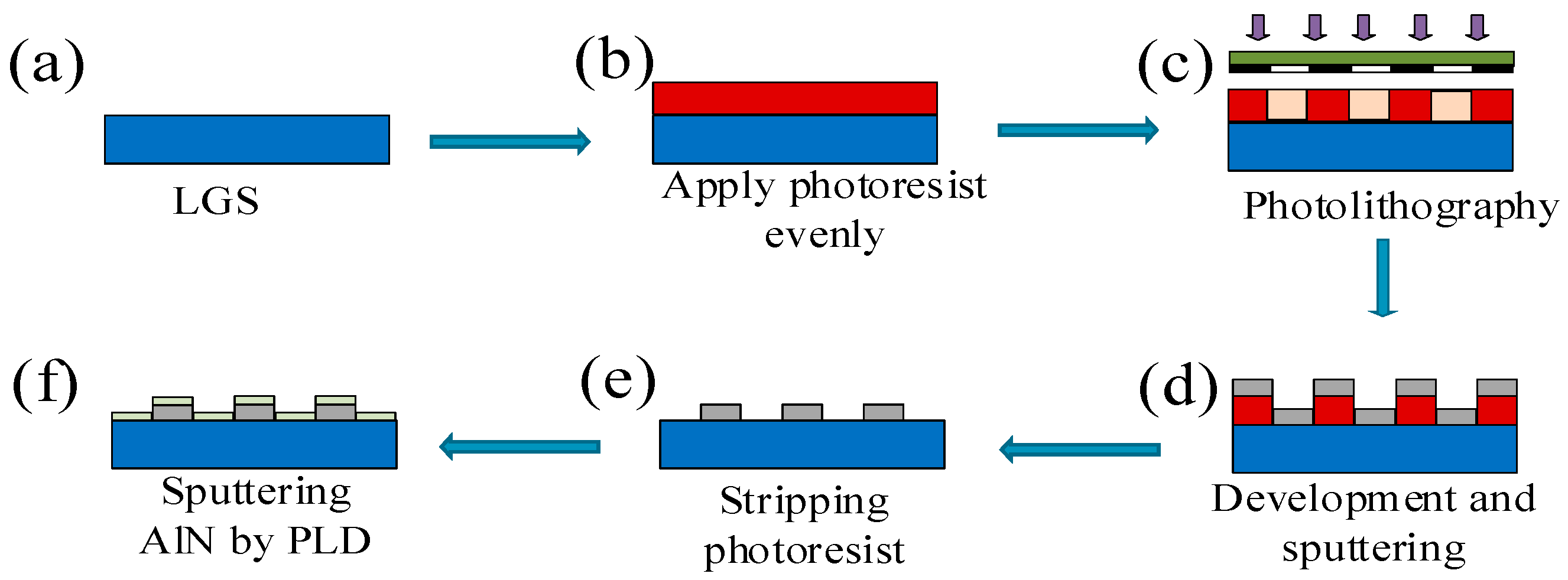
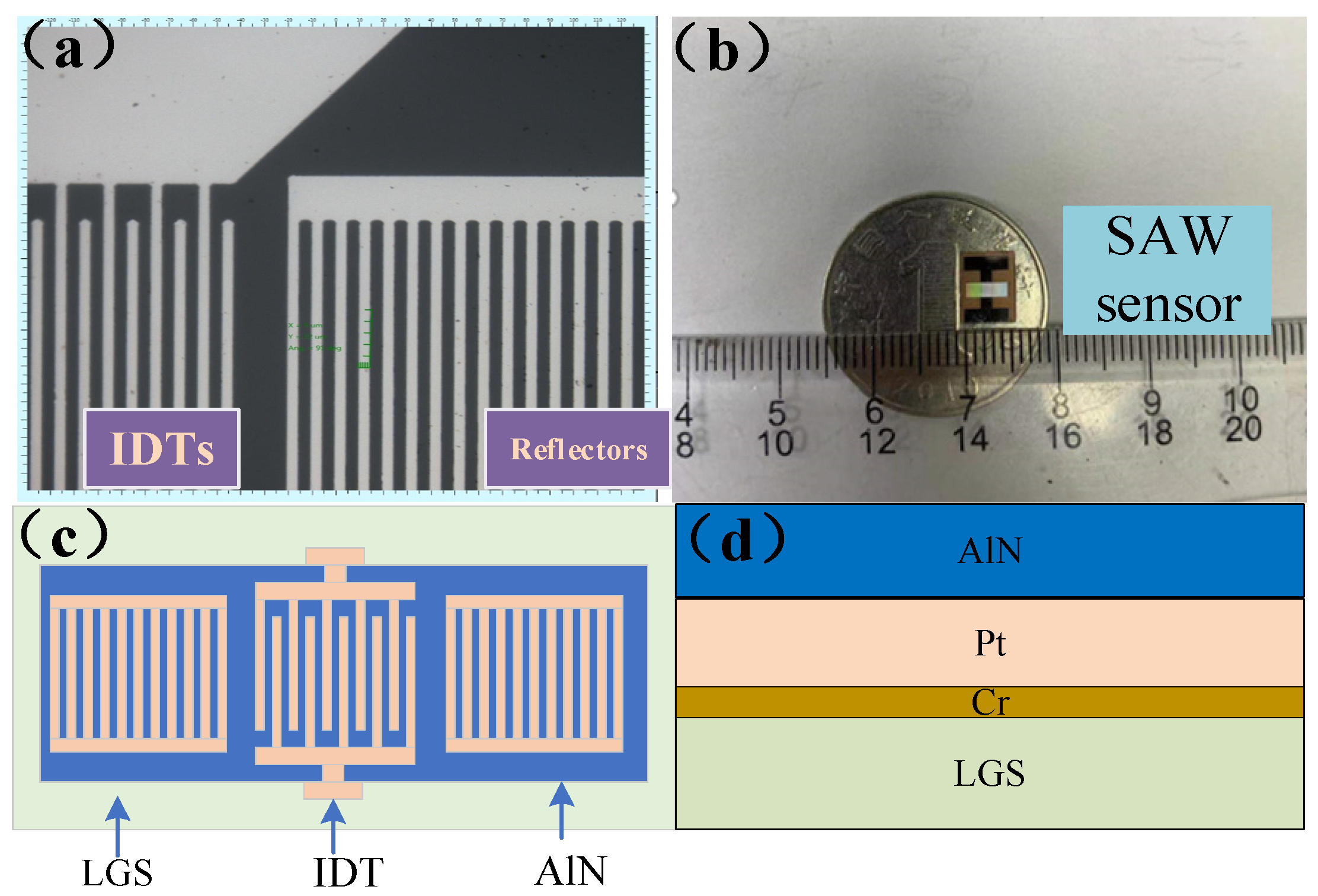

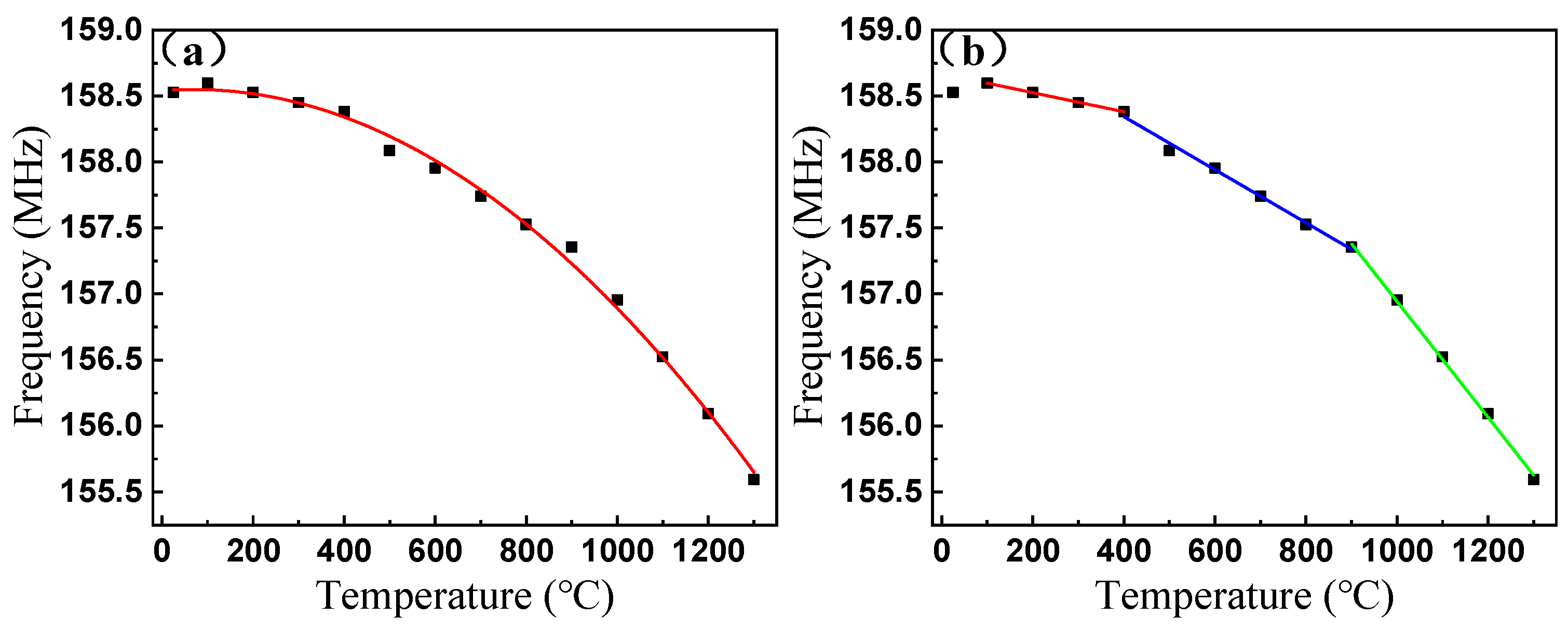
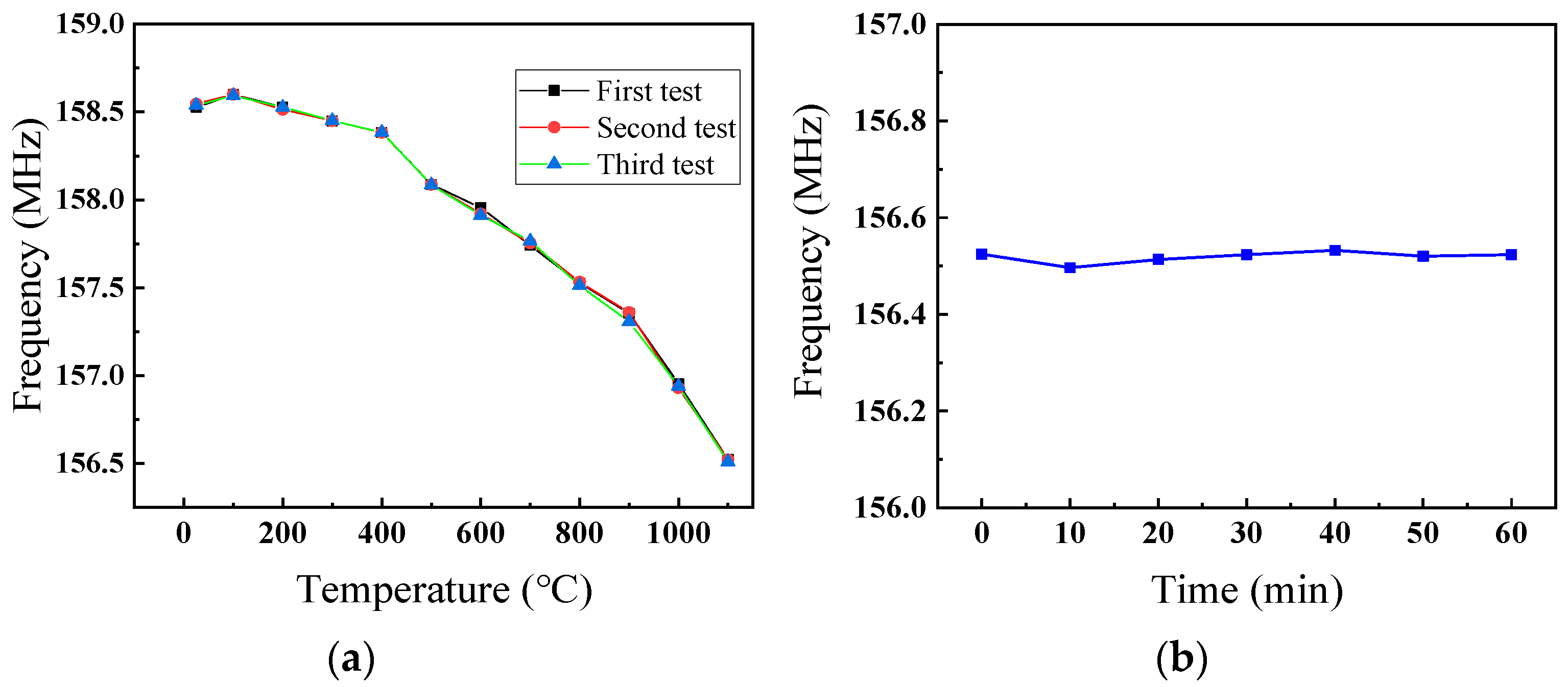

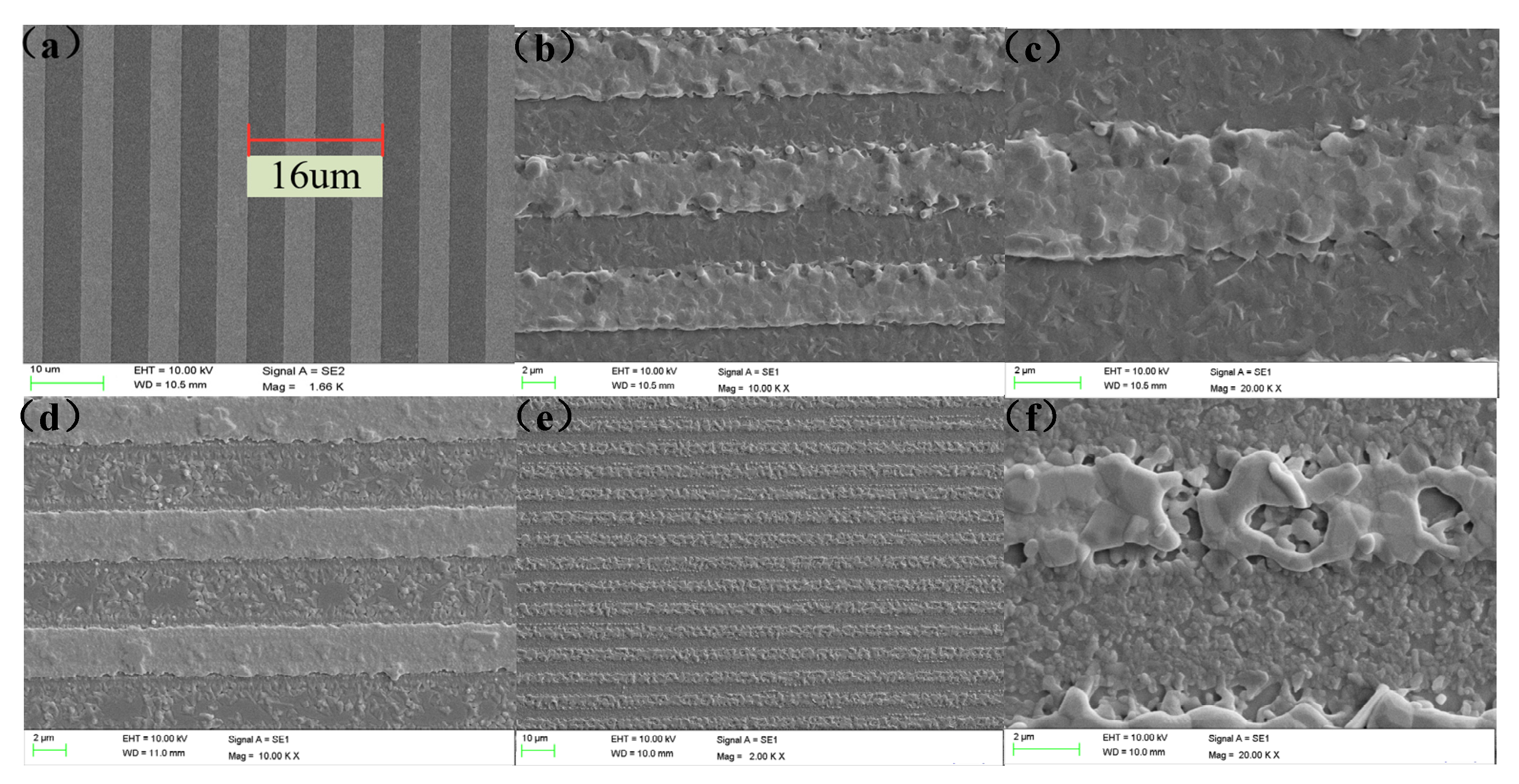
Publisher’s Note: MDPI stays neutral with regard to jurisdictional claims in published maps and institutional affiliations. |
© 2021 by the authors. Licensee MDPI, Basel, Switzerland. This article is an open access article distributed under the terms and conditions of the Creative Commons Attribution (CC BY) license (https://creativecommons.org/licenses/by/4.0/).
Share and Cite
Zhou, X.; Tan, Q.; Liang, X.; Lin, B.; Guo, T.; Gan, Y. Novel Multilayer SAW Temperature Sensor for Ultra-High Temperature Environments. Micromachines 2021, 12, 643. https://doi.org/10.3390/mi12060643
Zhou X, Tan Q, Liang X, Lin B, Guo T, Gan Y. Novel Multilayer SAW Temperature Sensor for Ultra-High Temperature Environments. Micromachines. 2021; 12(6):643. https://doi.org/10.3390/mi12060643
Chicago/Turabian StyleZhou, Xuhang, Qiulin Tan, Xiaorui Liang, Baimao Lin, Tao Guo, and Yu Gan. 2021. "Novel Multilayer SAW Temperature Sensor for Ultra-High Temperature Environments" Micromachines 12, no. 6: 643. https://doi.org/10.3390/mi12060643
APA StyleZhou, X., Tan, Q., Liang, X., Lin, B., Guo, T., & Gan, Y. (2021). Novel Multilayer SAW Temperature Sensor for Ultra-High Temperature Environments. Micromachines, 12(6), 643. https://doi.org/10.3390/mi12060643






